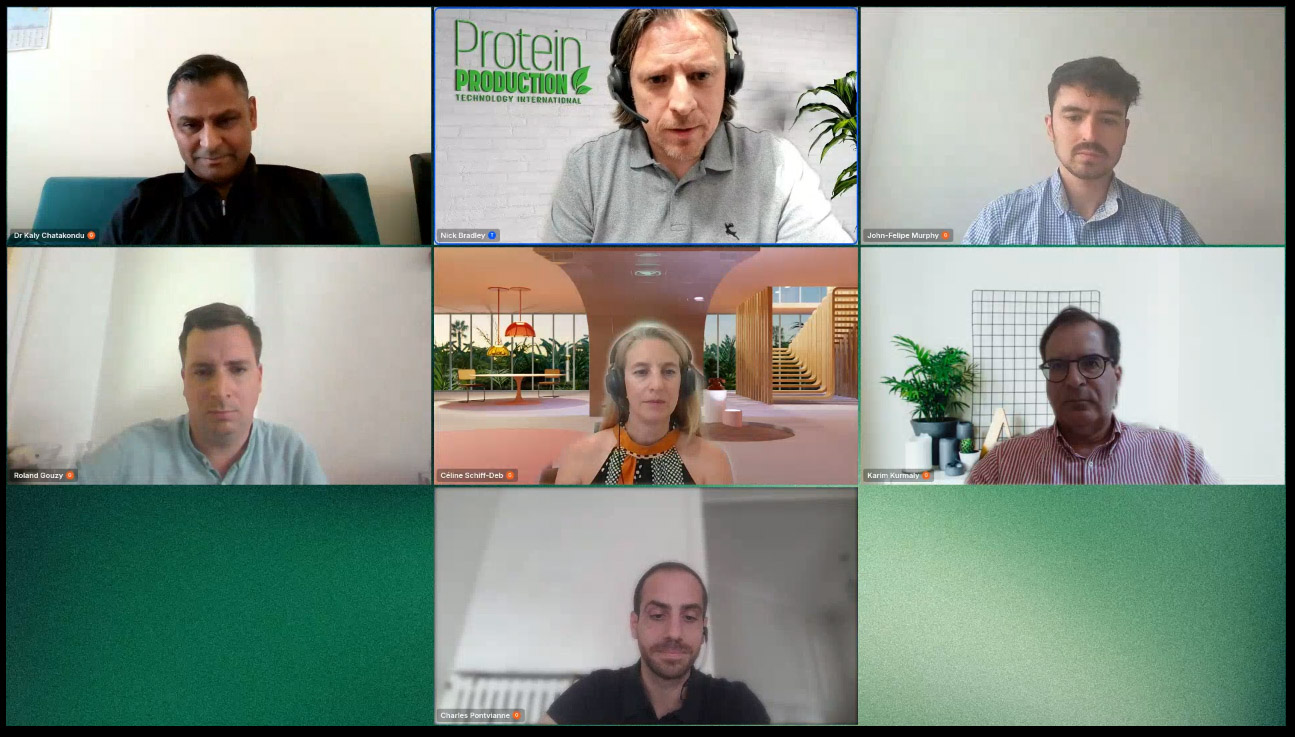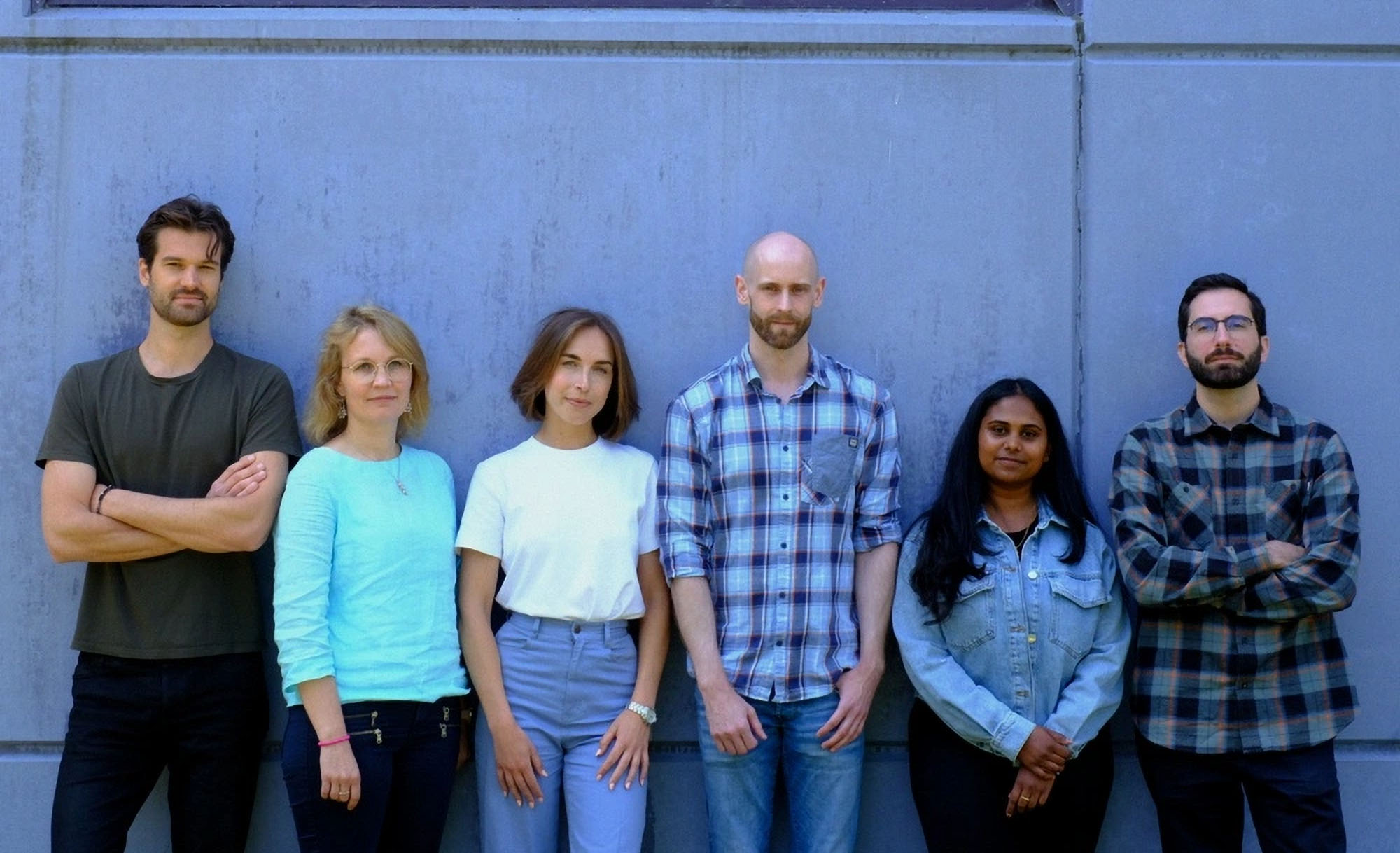

Arborea leads charge on turning CO₂ into protein at 'Beyond the Farm' webinar
At yesterday’s Beyond the Farm: Biomass Food Systems for a Resource-Scarce Future webinar, hosted in partnership with Arborea, a lineup of industry leaders laid out a bold vision for food systems that no longer depend on fertile land, fresh water, or agricultural feedstocks. From photosynthetic microalgae to submerged mycoprotein fermentation, panelists explored how biomass food platforms could help secure nutrition in a resource-scarce future.
Kaly Chatakondu, Global Commercial Director of Arborea, opened the event with a stark warning: “Every minute, the world loses a forest area equivalent to 18 football fields due to climate change,” he said. “By 2030, freshwater demand will exceed supply by 40%, and most of Earth’s soil will be degraded by 2050.” Arborea’s solution is to bypass traditional agriculture entirely.
The company’s patented BioSolar Leaf technology uses photosynthetic microalgae to capture carbon dioxide – transforming it into proteins, natural colors, and bioactives without requiring arable land or freshwater. “We can capture carbon for around US$100 per ton – or convert it into ingredients worth over US$5,000 per ton,” Chatakondu explained. “For every two tons of CO₂ captured, we produce one ton of food.”
Unlike open ponds or costly photobioreactors, Arborea’s enclosed system uses a breathable recycled plastic membrane to grow microalgae in tubes, mimicking human lungs in reverse. The technology enables large-scale, low-cost production of nutrient-rich ingredients like spirulina-derived protein – branded NovaProtein – which is neutral in taste and color, water-soluble, and highly functional.
“We're not just making ingredients,” said Chatakondu. “We’re creating finished foods, like plant-based milk that doesn’t require fertile land and doesn’t curdle in coffee.”
Following the presentation, moderator Nick Bradley invited other experts to weigh in on the future of biomass-based food systems.
Celine Schiff-Deb, Chief Scientific Officer at MISTA, noted the growing urgency to rethink agriculture. “We take agriculture for granted,” she said. “But it’s reaching a breaking point – and we have to pay attention.” Schiff-Deb has worked with biomass materials for over 15 years, including algae, fungi, and bacteria, and believes microalgae in particular offer compelling nutritional and functional benefits.
Charles Pontvianne, CFO at Swiss startup Planetary, emphasized biomass fermentation’s speed and efficiency. “We can complete single-batch fermentations in 48 to 72 hours,” he said. Planetary’s approach uses sucrose-fed mycoprotein co-located within an existing sugar mill, a model Pontvianne believes could be replicated globally.
“The advantage of working with already approved strains and familiar feedstocks is huge – it lets us skip the regulatory bottlenecks,” he said. “And by leveraging infrastructure like sugar mills, we’ve proven that you can go to market faster, with less risk.”
That theme of scalability was echoed by Roland Gouzy, Research & Innovation Manager for Alternative Protein at Danone. “A lot of promising ingredients are still at small scale,” he said. “That’s why we’re building a scaleup facility in France to support biomass and precision fermentation.” Gouzy also acknowledged price as a major hurdle: “Even if a novel protein performs well, it’s difficult to compete with low-cost staples like soy or milk proteins.”
Taste and texture remain equally critical. “People eat finished food, not ingredients,” Chatakondu said. “It has to look, taste, and feel familiar. We need products that deliver the same joy as conventional foods.” DSM-Firmenich’s Karim Kurmaly agreed: “We’ve leaned too heavily into disruption without nailing taste, texture, and cost. That’s what consumers care about.”
The panel also explored how health trends are shifting consumer expectations. Schiff-Deb pointed to the impact of GLP-1 drugs: “People are eating less, so every bite has to count. They’re demanding more nutrient-dense, natural, minimally processed foods.” Biomass ingredients, she argued, are well-positioned to meet that need.
Beyond health, the conversation turned to systems-level transformation. Imperial College London’s John-Felipe Murphy outlined three critical barriers: regulation, infrastructure, and market access. “Using approved strains helps smooth the regulatory path,” he said, “but the real challenge is bridging the gap from lab to scale. Creative models like co-location or CDMOs can help.”
Kurmaly added that startups must think across the entire value chain. “It’s not just about getting a food processor interested – you need the retailer in the room early. That’s how you make sure your product reaches consumers.”
In a rapid-fire round to close the session, panelists shared advice for companies exploring biomass innovation. “Make sure your R&D and brand teams are aligned,” said Schiff-Deb. “Too often, R&D clears an ingredient only to find there’s no buy-in from marketing.”
“Focus on price,” urged Pontvianne. “If you’re not at parity or below, scale will be hard.” Gouzy echoed the point: “Even the best ingredient can fail if it can’t compete with commodity proteins.”
Murphy encouraged companies to partner with academic institutions. “We’re working on amazing scale-up projects – don’t overlook academia’s role in driving innovation.”
For Arborea’s Chatakondu, the biggest lesson is to show – not tell. “People need to see and taste the final product,” he said. “And every part of the supply chain has to benefit – from farmers to consumers. That’s how we scale a new food system.”
The message from the panel was clear: biomass platforms like microalgae and microbial fermentation offer a credible, climate-resilient path forward. But success will depend on collaboration, real food experiences, and a shared commitment to getting beyond the lab – and onto the plate.
You can watch the playback of the webinar here.
If you have any questions or would like to get in touch with us, please email info@futureofproteinproduction.com






